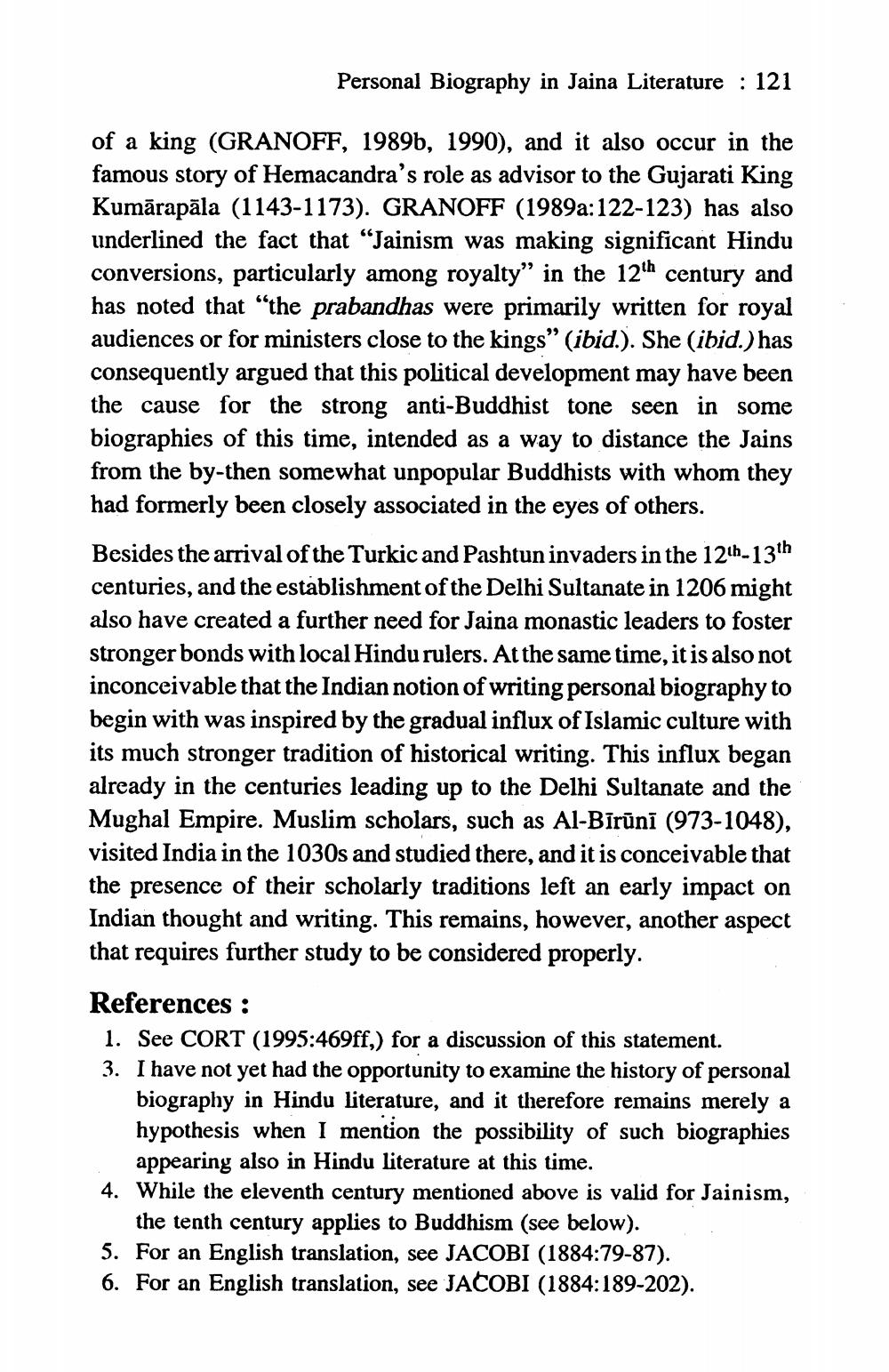________________
Personal Biography in Jaina Literature : 121
of a king (GRANOFF, 1989b, 1990), and it also occur in the famous story of Hemacandra's role as advisor to the Gujarati King Kumārapāla (1143-1173). GRANOFF (1989a:122-123) has also underlined the fact that "Jainism was making significant Hindu conversions, particularly among royalty” in the 12th century and has noted that "the prabandhas were primarily written for royal audiences or for ministers close to the kings" (ibid.). She (ibid.) has consequently argued that this political development may have been the cause for the strong anti-Buddhist tone seen in some biographies of this time, intended as a way to distance the Jains from the by-then somewhat unpopular Buddhists with whom they had formerly been closely associated in the eyes of others. Besides the arrival of the Turkic and Pashtun invaders in the 12th-13th centuries, and the establishment of the Delhi Sultanate in 1206 might also have created a further need for Jaina monastic leaders to foster stronger bonds with local Hindu rulers. At the same time, it is also not inconceivable that the Indian notion of writing personal biography to begin with was inspired by the gradual influx of Islamic culture with its much stronger tradition of historical writing. This influx began already in the centuries leading up to the Delhi Sultanate and the Mughal Empire. Muslim scholars, such as Al-Bīrūnī (973-1048), visited India in the 1030s and studied there, and it is conceivable that the presence of their scholarly traditions left an early impact on Indian thought and writing. This remains, however, another aspect that requires further study to be considered properly. References :
1. See CORT (1995:469ff,) for a discussion of this statement. 3. I have not yet had the opportunity to examine the history of personal
biography in Hindu literature, and it therefore remains merely a hypothesis when I mention the possibility of such biographies
appearing also in Hindu literature at this time. 4. While the eleventh century mentioned above is valid for Jainism,
the tenth century applies to Buddhism (see below). 5. For an English translation, see JACOBI (1884:79-87). 6. For an English translation, see JACOBI (1884:189-202).




